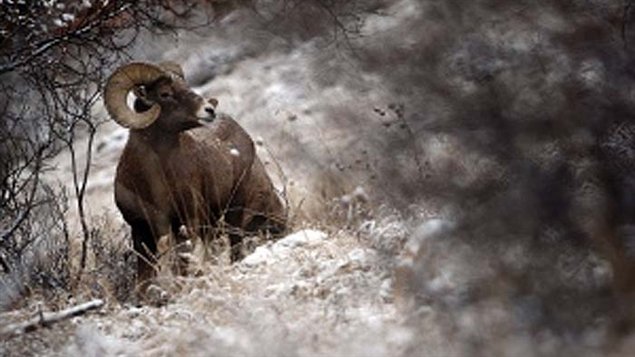A just released scientific study shows that big game trophy hunters are adversely affecting the gene pool of the Rocky Mountain bighorn sheep, leading to smaller animals.
Biologist Marco Festa-Bianchet from the University of Sherbrooke in Quebec has been studying ungulates for more than 30 years. His report, in the latest edition of the Journal of Wildlife Management says trophy hunting is having a negative effect upon the bighorn population.
The study shows that decades of trophy hunting of rams reaching the required hunting size quickly, and with big horns, was taking the most fit out of the breeding gene pool. Slower growing rams, and those with smaller horns are being left to breed.
The scientist points out that by hunting the most fit with the bigger horns, trophy hunters are removing the rams with the better genes from the breeding pool, the exact opposite of natural selection.
The concept of hunting the biggest trophy animals is called “high grading”.
“The hunt is actually selecting in a direction that is opposite to what natural selection would be,” he said. “Normally, a large-horned ram would do very well, but in a hunted population he is more likely to get shot.”
Normally, natural selection favours mature, robust individuals, who have strong genes and are highly successful reproductively. These “alpha” males have offspring that are larger than average, incuding mothers-to-be with robust constitutions. “These are the physiological characteristics that tend to be eliminated by selective hunting,” said Festa-Bianchet.
He and the research team studied records of some 7,000 bighorn rams harvested in Alberta between 1974 and 2010. They found that from 1980-2010, horn length had decreased by about 3 cm.
The added concern is that the rams taken are now older, meaning they are also growing more slowly. There also seems to be fewer of them. The number of rams taken has declined by 35% at
In Alberta, where the Rocky Mountain bighorn is the provincial animal, rams may only be legally shot once their horns form four-fifths of a complete circle on either side of their heads. This generally takes four or five years. However, rams don’t reach their reproductive peak until a couple of years after that.
The records also show that non-resident hunters who must hire guides, do not find trophy rams that are larger than resident hunters. This suggests that there are fewer large rams, and the number of successful hunts has gone down as there are fewer rams to be taken which meet the legal requirement.
The study, conducted with colleague Fanie Pelletier, from the Department of Biology in the Faculty of Science, and wildlife managers with the Alberta government strongly suggests that selective hunting has acted to the detriment of the individuals best equipped to maintain a vigorous population.
“There are practically no more large-horned mature individuals who have achieved their full reproductive potential with well-developed horns.”
The scientists suggests that the hunting season be shortened, and/or the rules changed such that the legal requirement be increased from the current 4/5th curl, to full curl. This would give males an added year or two to breed.
They point out that hunters and wildlife managers need to understand that ‘high-grading’ has a selective affect on populations.
Journal of Wildlife Management- abstract







For reasons beyond our control, and for an undetermined period of time, our comment section is now closed. However, our social networks remain open to your contributions.